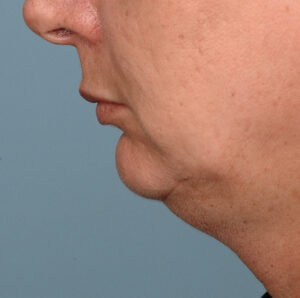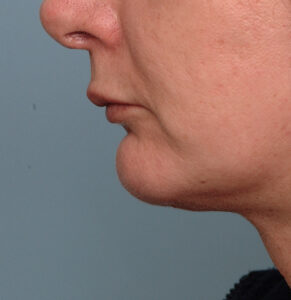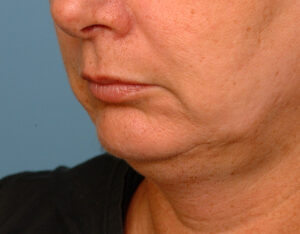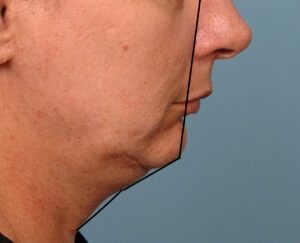Background: The chin and neck are related more than just by anatomic proximity. The prominence or angularity of one affects the appearance of the other one. Aesthetically it is difficult to separate one from the other. A short chin makes the neck appears less defined. Conversely a neck that is more obtuse makes the chin/jawline projection look deficient. This is maximally illustrated when the combination of a short chin and an obtuse neck occur together…which is not that uncommon.
Unlike the relationship between the nose and the chin (which is really a comparison of two projecting structures in profile at different facial levels) the chin and neck are more directly connected. One can not be changes without influencing the other. This is why it many patients need simultaneous treatment of both to get the best lower facial change.
The projection of the chin affects the perception of the length of the jawline. Various methods have been described to locate the ideal chin projection. But any of these methods must take into account the gender differences where a little less chin projection is better tolerated in females historically while more chin projection is better accepted in males. But as it relates to the neck, chin projection can be best appreciated using the mentocervical angle (90 to 120 degrees) which correlates the forehead-chin- neck point relationship which is more obtuse in females and more acute in men.
The cervicomental angle, also known as the submental-cervical angle, is affected both by natural development as well as aging. This is most visibly seen in profile where it can range from 90 to almost 180 degrees. The acceptable aesthetic range of attractiveness is most commonly seen between 95 to 115 degrees. Once this neck angle approaches 120 degrees and greater it is universally seen as unattractive/undesired. The anatomic components of the neck angle include the laxity of the submental-cervical skin, suprahyoid muscle support, subcutaneous fatty deposits and the projection of the chin/jawline.
Case Study: This female desired to have an improver lower facial and neck shape. Her chin was fairly short with an obvious class II malocclusion (as judged by the lower lip position and deeper labiomental fold) and a very obtuse neck with a near 180 degree submental-cervical angle.
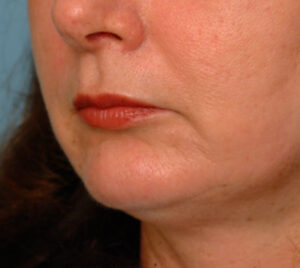

Case Highlights:
1) The projection of the chin has a major role to play in how the shape of the neck appears.
2) Increasing chin projection and improving the cervicomental angle of the neck are one of the classic diametric form of facial reshaping.
3) Chin augmentation and neck reshaping are inter related as one always directly affects the appearance of the other.
Dr. Barry Eppley
Indianapolis, Indiana




